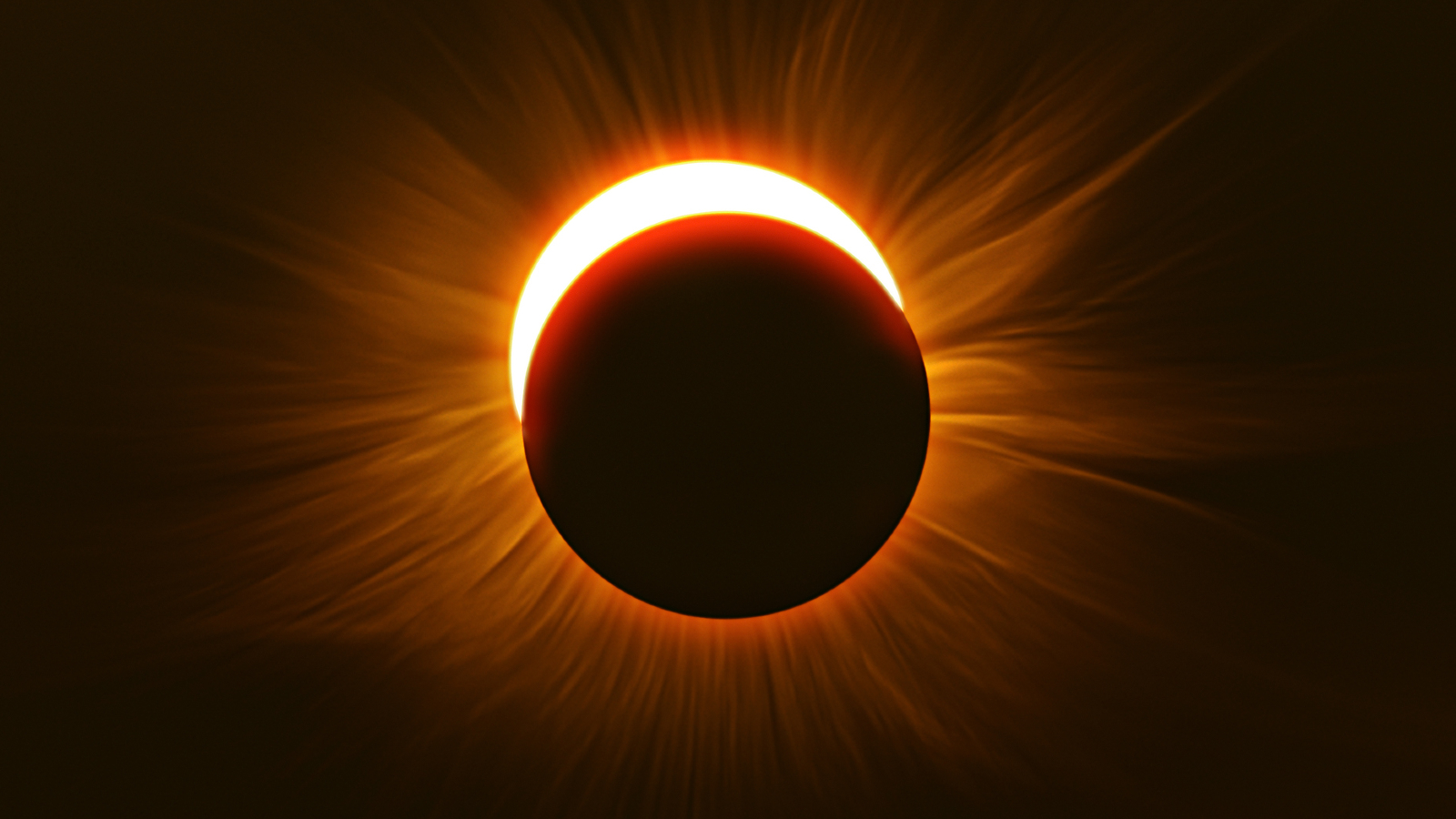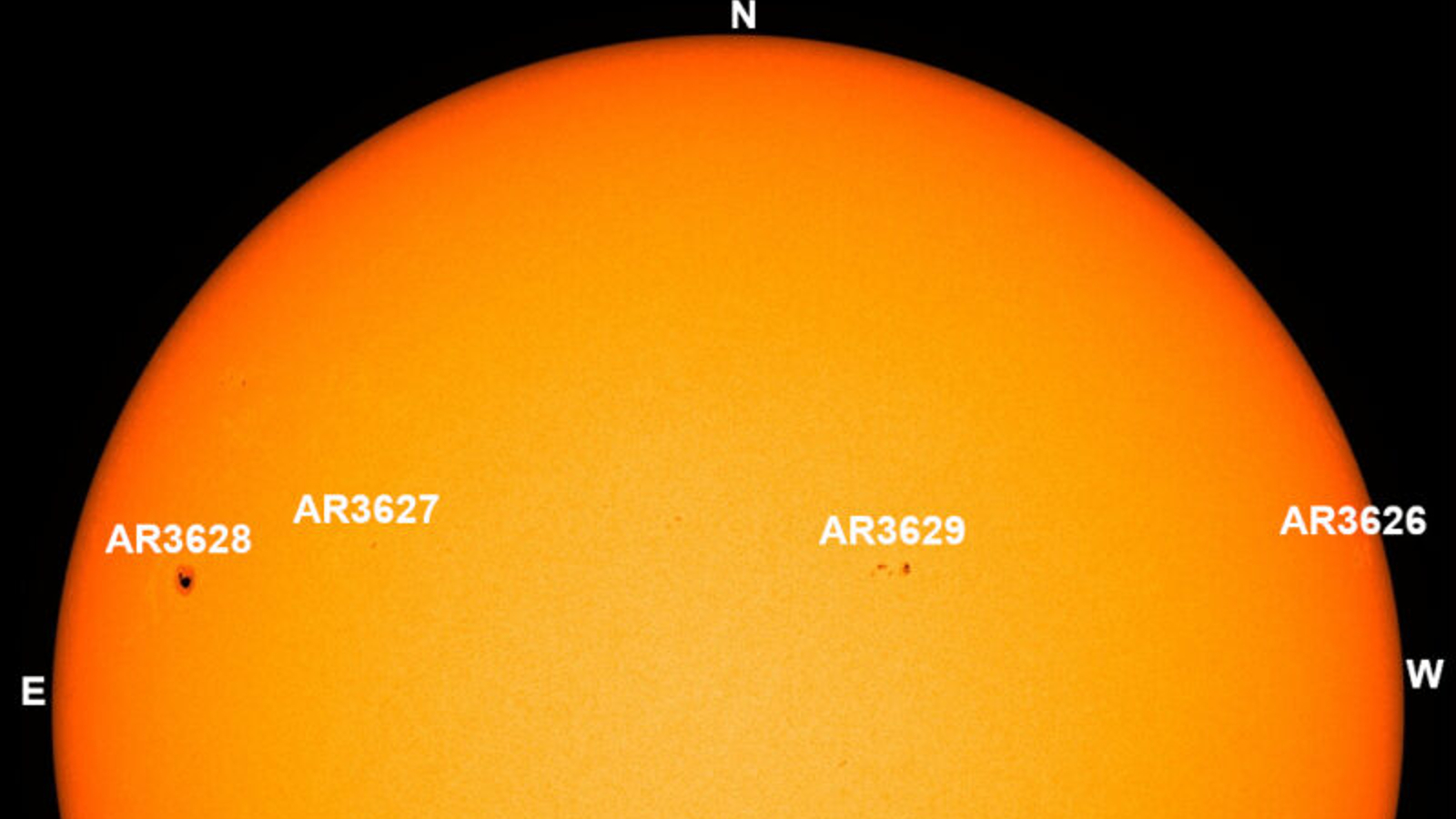The sun is surprisingly quiet right now. What does this mean for the April 8 total solar eclipse?
Despite nearing its most active period, the sun is unusually inactive right now and may not wake up again before the total solar eclipse on Monday (April 8). How will this impact our view of the spectacle?

The sun seems to be taking an unexpected nap right now — just in time for the April 8 total solar eclipse on Monday.
Until recently, solar activity has been very high, which has raised hopes that we may be able to see solar storms shooting out of our home star during totality — the period when the sun is completely blocked out by the moon. But this now seems unlikely, according to the latest space weather forecasts.
However, if you can get an unobstructed view of our home star from somewhere along the path of totality, it should still look much more impressive than during most other eclipses, experts say.
The sun is currently nearing solar maximum, the explosive peak of its roughly 11-year solar cycle when dark sunspots litter the sun's surface and frequently spit out powerful solar storms. Some experts believe that this phase may have already begun, around a year earlier than initially forecast. But we will not know for sure until long after it is over.
Over the last two months, solar activity has been exceptionally high. We have seen gigantic sunspots, frequent X-class solar flares (the most powerful class of solar explosion) and towering plasma plumes. On March 23, Earth also experienced its biggest geomagnetic storm in more than six years after a giant cloud of plasma and radiation, known as a coronal mass ejection (CME), smashed into the planet.
Related: April 8 solar eclipse: What time does totality start in every state?

Right now, however, the sun is surprisingly quiet. There are just a couple of active sunspot regions on the sun's nearside to Earth, which are much smaller than those we have seen in the last few weeks, according to Spaceweather.com. The orientation of these regions' magnetic fields also hints that there is a low chance they will be spitting out solar flares or CMEs between now and the eclipse, according to Earthsky.com.
Get the world’s most fascinating discoveries delivered straight to your inbox.
But just because solar storms are unlikely doesn't mean the eclipse will be any less spectacular. Due to the sun's currently weakened magnetic field, the corona — the outer part of the sun's atmosphere, which looks like a ghostly halo when viewed during a total eclipse — will still be much more prominent than it is during other periods of the solar cycle.

The radiation streaming from the sun will make the corona look like a "spiky hedgehog" during the eclipse, Scott McIntosh, a solar physicist and deputy director of the National Center for Atmospheric Research in Colorado, told Live Science in an email.
There will also be lots of other interesting stuff for observers to look out for during the eclipse, including stars, planets and the "devil comet," 12P/Pons-Broos, which will be in close proximity to the sun during the eclipse.
However, if you are planning to take a peep at the sun during totality, make sure to do so safely. Totality is the ONLY time it is safe to look at the sun without eye protection — and you MUST be within the path of totality to do so. At all other times during the partial phases of the eclipse, you must wear a decent pair of eclipse glasses, or use other forms of eye protection, such as a pinhole projector or a good solar telescope.

Harry is a U.K.-based senior staff writer at Live Science. He studied marine biology at the University of Exeter before training to become a journalist. He covers a wide range of topics including space exploration, planetary science, space weather, climate change, animal behavior and paleontology. His recent work on the solar maximum won "best space submission" at the 2024 Aerospace Media Awards and was shortlisted in the "top scoop" category at the NCTJ Awards for Excellence in 2023. He also writes Live Science's weekly Earth from space series.


